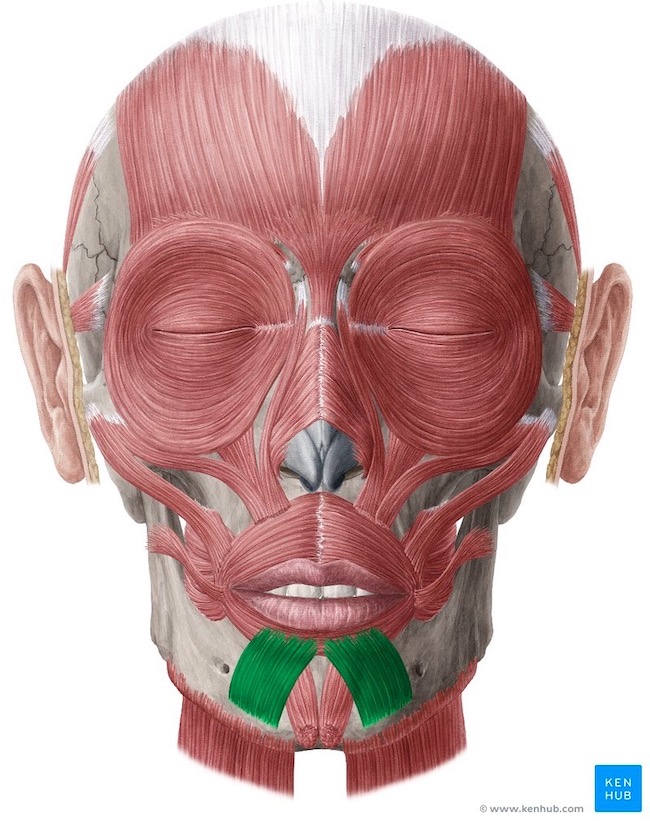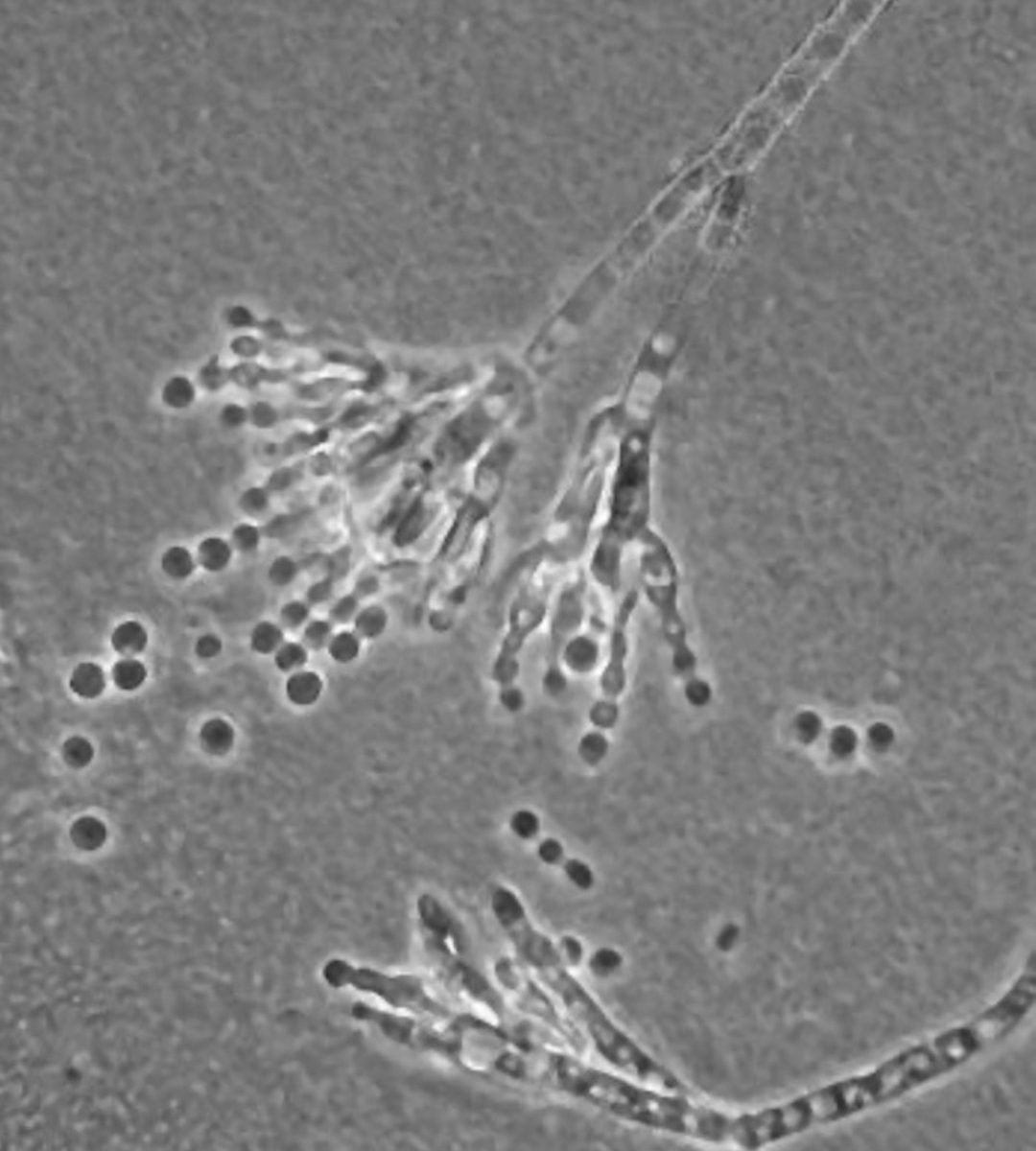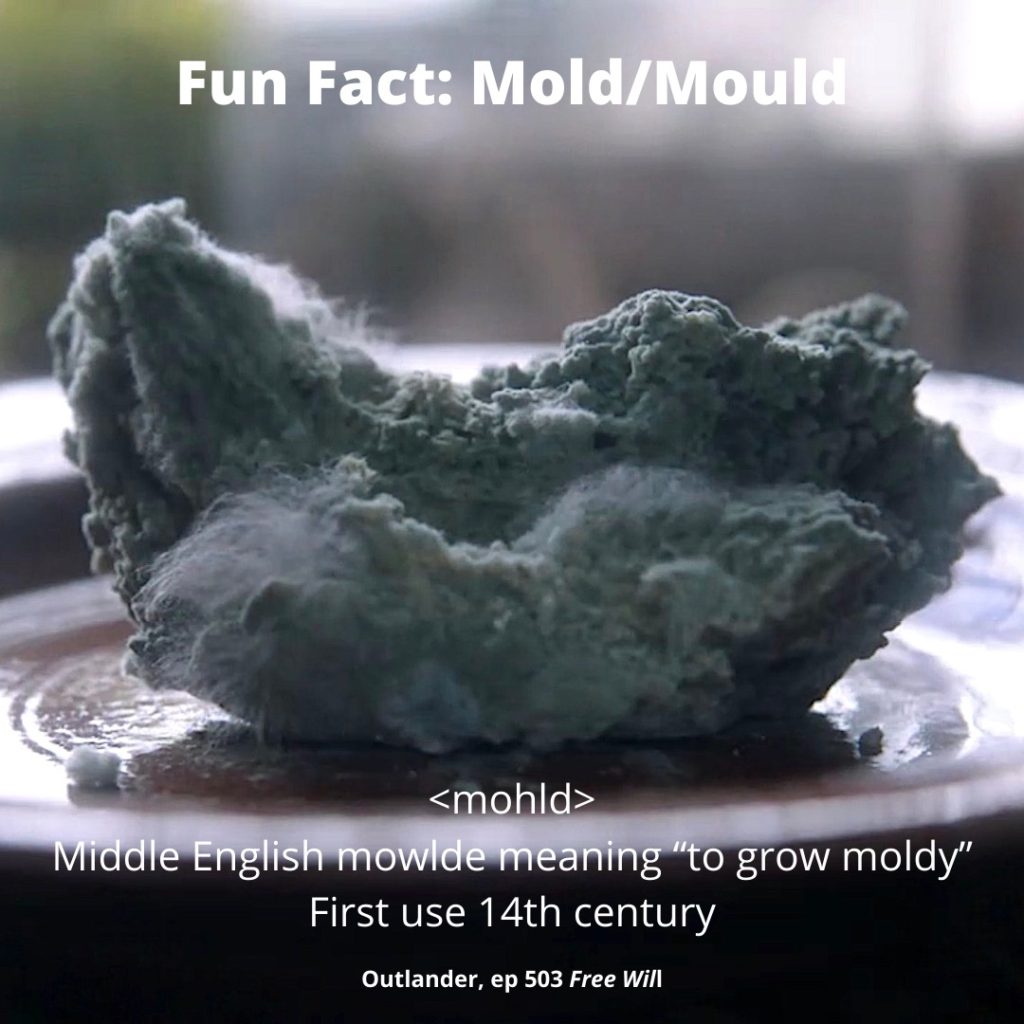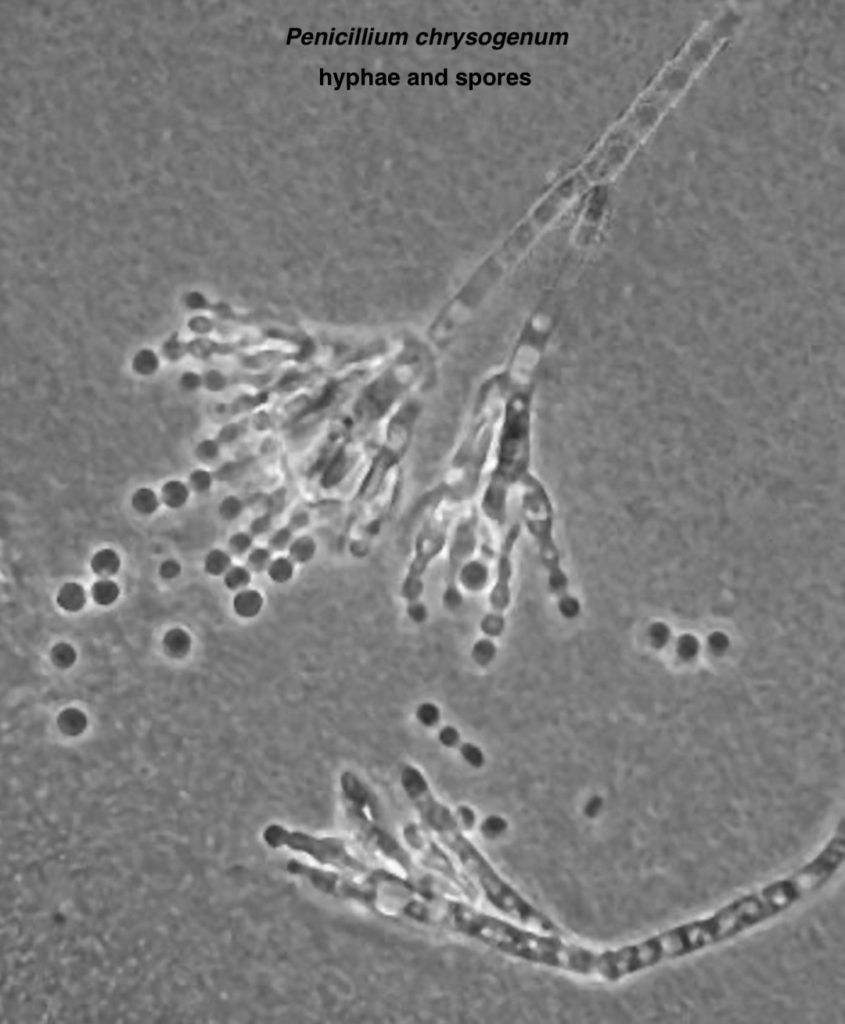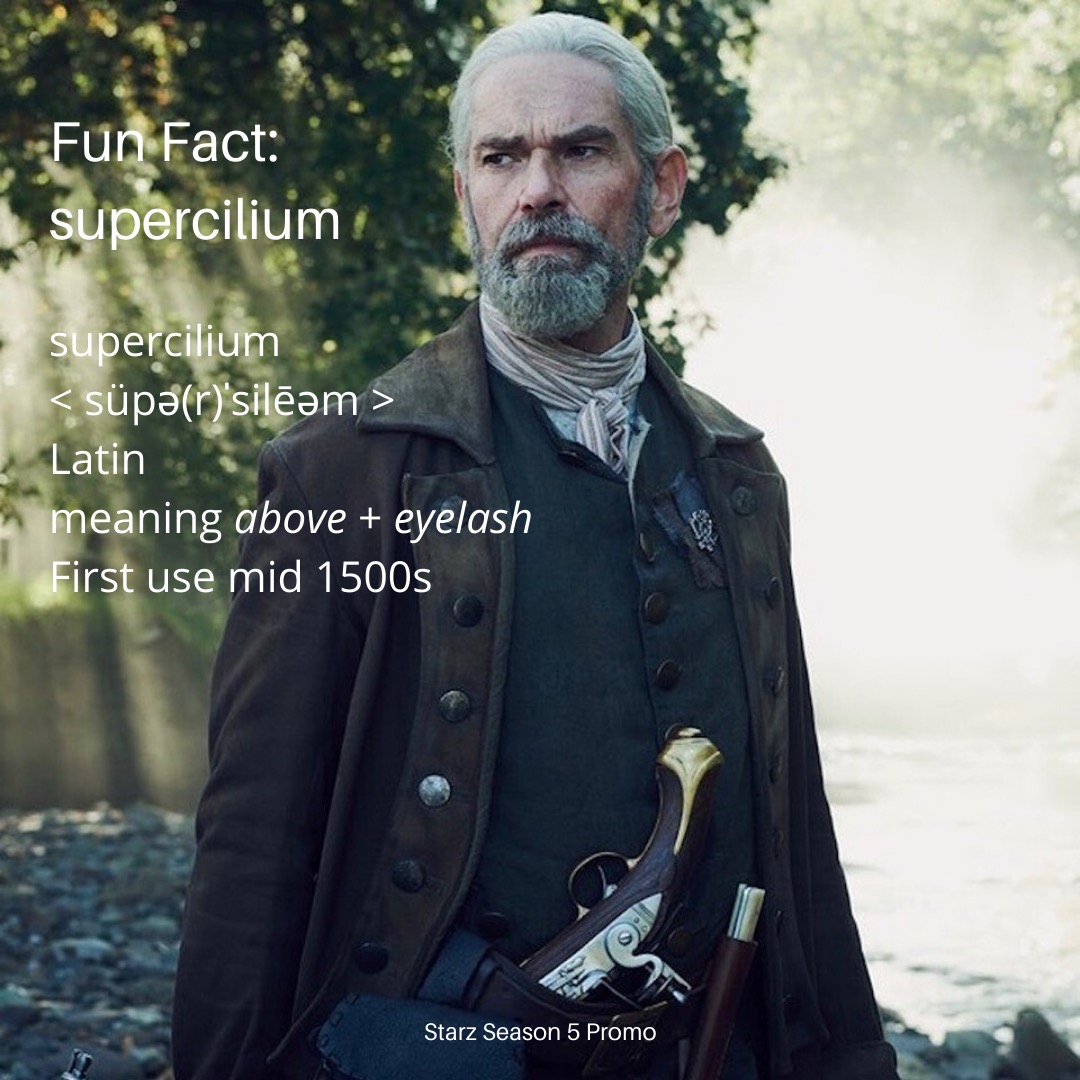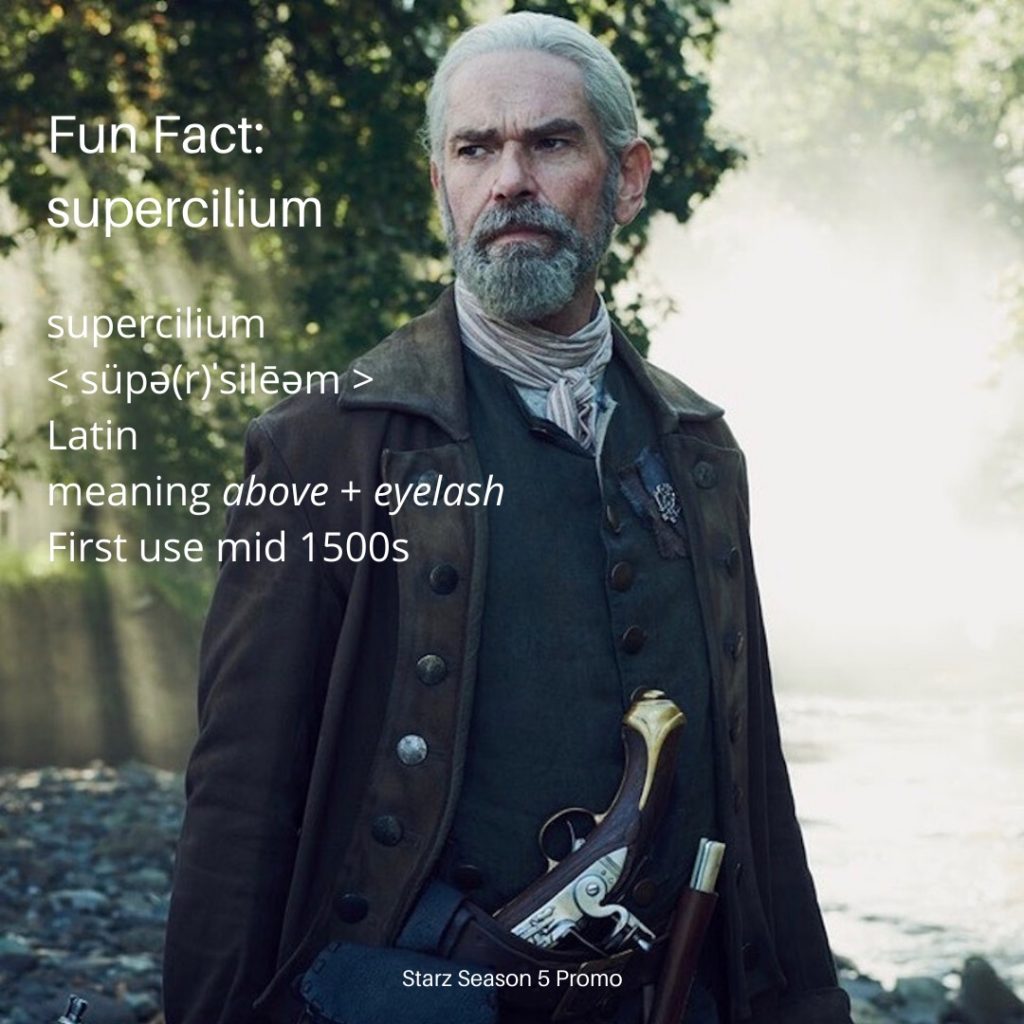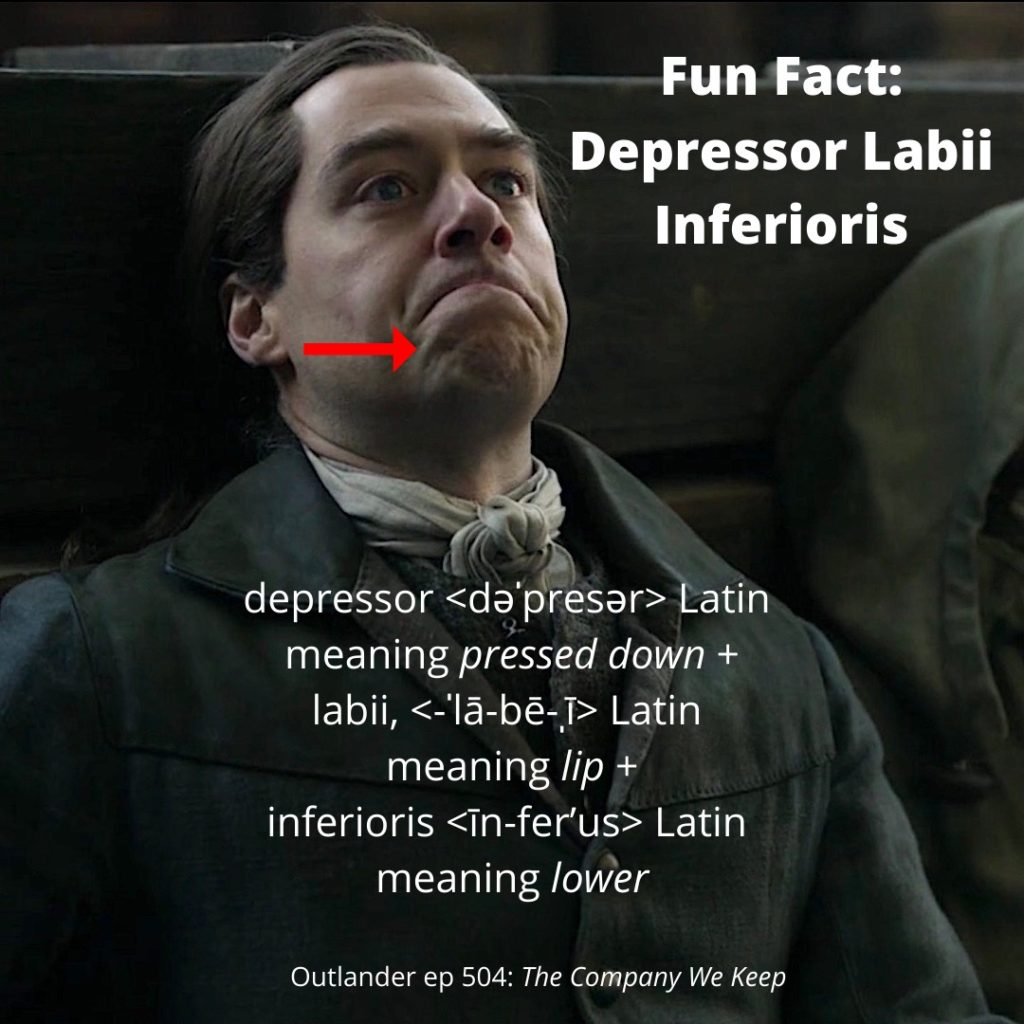
Anatomy Def: Depressor labii inferioris are paired muscles which together pull down (depress) the lower lip.
Outlander Def: Roger’s “oh shite – what do I do now?” muscles (red arrow)!
Learn about depressor labii inferioris (DLI) in Anatomy Lesson #11, “Jamie’s Face or Ye Do it Face-to-face?,” a lesson I wrote way back in 2015. Warning, it is a long one!
Roger has a pair of the most prominent DLI I have ever seen! His are contracted at this moment in the Brownsville standoff, drawing his lower lip down and producing two very prominent ridges of his chin-skin. The red arrow marks his right DLI but the left ridge is also visible. Can you see both?
Try this: Stand before a mirror and strongly depress the lower lip. See if you can produce similar ridges in your chin skin.
Anatomists classify DLI as muscles of facial expression. Most humans have about 20 pair of such muscles. If you ever ponder how it is we have such mobile faces, it is due to a total of 40 or so muscles moving the facial skin to achieve our amazing range of facial expression. Fear, anger, distrust, frustration, joy, etc., are all non-verbal forms of communication produced by this group of muscles.
DLI are relatively small, thin and flat. Like all muscles of facial expression, structure can vary from person to person. These are also innervated by the same pair of nerves which is why serious injury to one of these nerves causes paralysis of the same side of the face.
Read about lips in Diana’s fifth big book, The Fiery Cross; they are referenced many times in this tome. This excerpt is from the Brownsville standoff:
“What did he say?” Mrs. Brown whispered to her sister-in-law. The older lady shook her head, lips drawn in like a pursestring. “Mr. Morton is alive and well,”
Roger translated for them. He coughed. “Fortunately for you,” he said to the male Browns, with as much menace as he could contrive to put into his voice.
See Capitaine Roger MacKenzie’s DLI muscles in action in Outlander episode 504, The Company We Keep! Splendid episode! 👏🏻👏🏻👏🏻
The deeply grateful,
Outlander Anatomist
Follow me on:
-
- Twitter @OutLandAnatomy
- Join my Facebook Group: OutlandishAnatomyLessons
- Instagram: @outlanderanatomy
- Tumblr: @outlanderanatomy
- Youtube: Outlander Anatomy
Photo credit: Sony/Starz

